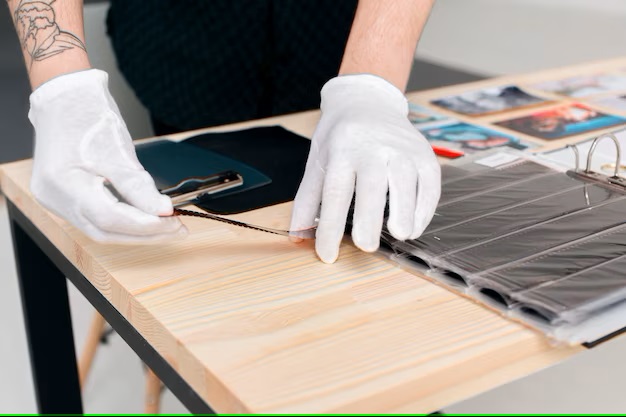Canvas Art with Plastic Animals
For a playful touch in your home decor, consider incorporating miniature figures of wildlife into your wall displays. Paint your background in bold colors or subtle pastels to create contrast that highlights the toys’ shapes and textures. Arrange these little figures in a whimsical scene or a geometric pattern to engage viewers and spark conversations.
Experiment with layering different materials alongside your toy figures to enhance depth. Try combining fabric swatches, scrapbook papers, or even recycled elements. This mixed media technique not only adds dimension but also introduces various visual languages that enrich the overall composition.
Don’t hesitate to use unconventional colors for the figures themselves. Spray paint them in bright hues or cover them in glitter to create an eye-catching centerpiece that draws attention. The juxtaposition of textures and colors will infuse energy into any room, making it more inviting and lively.
Lastly, consider presenting your pieces in clusters or themed collections. Grouping similar items creates a cohesive look while allowing for variations in style. This approach not only showcases your personality but also turns an ordinary wall into a delightful gallery of imagination.
Choosing the Right Plastic Animals for Your Canvas Project
Select figures that resonate with your vision. Consider scale; larger models make bold statements while miniatures can add delicate details. Reflect on the theme – tropical birds, jungle beasts, or farm creatures can evoke different feelings. Ensure the materials of the figures are compatible with your desired techniques; some plastics are easier to manipulate than others.
Color and Texture Selection
Look for animals that complement the color palette of your base. Brightly painted figures can add pops of excitement, while neutral tones can create harmony. Textured pieces can enhance visual interest, providing layers to your design. If possible, opt for variations in surface finishes, as this can create dynamic contrasts against the background.
Source and Quality
Buy from reliable suppliers, ensuring your choices are durable and free from defects. Thrift stores, toy shops, and online marketplaces can be rich sources. Check for any sharp edges or irregularities that might affect your work. Choose pieces that can endure the application of paints, glues, or other mediums without damage.
Preparing Your Canvas: Techniques for the Best Adhesion
Clean the surface thoroughly using warm, soapy water to remove any dust or oils. A clean substrate ensures strong bonding between materials. Allow the surface to dry completely before proceeding.
Sanding the surface lightly can improve adhesion by creating a rough texture. Use fine-grit sandpaper for best results. Wipe away the dust with a damp cloth afterward to prevent interference with bonding agents.
Prime the surface with a suitable primer, which can be acrylic or gesso, depending on your base materials. This step seals the surface and enhances adhesion, providing a uniform base for further application.
For challenging materials, consider applying a layer of Mod Podge or a clear acrylic medium before adding additional elements. These products create a sticky foundation that helps secure objects.
Use a strong adhesive suited for your chosen materials. Hot glue, epoxy, or craft glue can provide durable holding power. Test the adhesive on a small area to guarantee compatibility.
Let each layer of adhesive or primer cure fully before introducing new materials. This prevents bubbling or lifting and ensures a secure bond.
After everything is securely attached, protect your piece with a clear sealant to ensure longevity. This can be a spray or liquid form, safeguarding against moisture and wear.
Incorporating Color: Painting Techniques for Plastic Animals
Select acrylic paints for durability and vibrant hues on synthetic figures. They adhere well and dry quickly, allowing for layering and detail work.
Before applying paint, clean the surface with soap and water to remove any residue. This enhances adhesion and ensures a smooth finish.
Use a spray primer to create a uniform base. It helps in achieving an even texture and brightens the final appearance of colors applied above.
Consider a dry brushing technique for highlights. Lightly dip a brush in paint, removing excess, and gently apply it to raised areas. This adds depth and dimension.
Employ stencils for intricate designs. Secure them with tape while applying color underneath, allowing for sharp edges and defined patterns.
Experiment with sponging to create texture. Dip a sponge in paint and lightly dab it onto the surface. This method introduces unique finishes, imitating natural patterns.
To achieve a gradient effect, use a wet-on-wet technique. Apply two colors side by side and blend them together while wet for a smooth transition.
Finish with a clear sealant to protect painted surfaces. This adds gloss or matte effects based on the desired look and maintains color integrity over time.
Creating a 3D Effect: Layering Techniques with Plastic Figures
Begin layering by establishing a background. Choose a solid color or a subtle gradient to serve as a canvas for your figures. This foundation sets the stage for depth.
Layering Heights
Utilize different heights of figures to create a sense of perspective. Position larger pieces in the foreground and smaller ones towards the back. This arrangement mimics natural scenes, enhancing realism.
Shadow Play
Incorporate shadows by painting beneath the figures with darker tones. Use a soft brush technique for gradual transitions to simulate shadows, providing additional dimensionality. Consider using a light source to guide where shadows should fall.
Experiment with materials such as cardboard or foam to elevate certain aspects, allowing figures to stand out further from the surface. Secure them with strong adhesive for stability.
Mix various textures among figures–smooth finishes contrast strikingly with rugged surfaces. This variation captures attention and enriches the visual experience.
Lastly, adjust the alignment of figures slightly off-center for a more dynamic composition. This subtle shift draws the eye and enhances the illusion of depth.
Adding Texture: Using Mixed Media with Plastic Elements
Incorporate different materials to enhance tactile quality in your work. Combine small figurines with various agents like sand, fabric, or metallic paints to create rich surfaces. Ensure smooth adhesion by using suitable adhesives such as a strong craft glue or epoxy for durable applications.
Material Suggestions
- Textured Paint: Use coarse acrylics or gel mediums to add dimensional interest around your figures.
- Fabric Scraps: Attach bits of burlap, lace, or cotton for a contrasting feel that softens the hard elements.
- Sculpted Elements: Mix clay or air-drying putty to form shapes around your tiny figures for a cohesive look.
Technique Overview
- Choose a focal point from your plastic collection.
- Mix the chosen mediums on a palette before application.
- Layer materials gradually, allowing each layer to dry before continuing.
- Consider using tools like palette knives or sponges for textural application.
- Finish with a clear varnish to protect the surface and unify the composition.
This approach not only enhances visual dynamics but also invites viewers to engage through touch. Experimentation is key; every combination can yield unique results, offering new dimensions to your project.
Display Ideas: How to Showcase Your Finished Artwork
Hang your masterpiece in a gallery wall format. Combine multiple pieces in a cohesive arrangement to create an eye-catching display. Use frames of varying sizes to add depth and interest.
Alternative Showcasing Options
Consider using shelves to display artwork alongside unique objects or plants. This approach creates a dynamic environment that enhances your creations. Pairing with small decor items allows for an aesthetic mix that captures attention.
Utilize Different Heights
Incorporate stands or pedestals for showcasing pieces at different levels. This technique draws the eye upward and creates intrigue. Balance larger works with smaller pieces to maintain harmony within the space.
| Display Method | Description |
|---|---|
| Gallery Wall | Arrange multiple pieces in an engaging layout on a single wall. |
| Shelves | Use horizontal space to mix art with decorative items. |
| Stands or Pedestals | Elevate pieces for varied heights, enhancing visual interest. |
Q&A: Canvas Art with Plastic Animals
How can you create diy canvas art with plastic for a fun and easy idea to decorate a nursery?
To create diy canvas art with plastic for a nursery, start with a set plastic canvas and choose plastic canvas patterns featuring baby animal or farm animals like a cow, giraffe, or elephant. Stitch the patterns using colorful yarn, then mount the finished plastic canvas onto a blank art canvas using glue or small nails. Place the canvas into a wooden frame for a polished look. This fun and easy idea results in a handmade piece of wall decor perfect for a nursery or child’s room.
What makes animal wall art a popular choice for canvas wall art in modern art-inspired rooms?
Animal wall art is popular in modern art settings because it combines personality with visual interest. A framed canvas or gallery-wrapped canvas featuring a lion, deer, or highland cow adds texture and a focal point to the space. Styles like watercolor or funny animal expressions bring charm and playfulness to art wall decor. These canvas animal prints are often ready to hang, making them a convenient and eye-catching addition to both nursery spaces and adult rooms looking for a unique art piece.
How can animals canvas art be used as wall art in a forest animal-themed nursery?
Animals canvas art is ideal for a forest animal-themed nursery, especially when featuring deer, foxes, and bears in soft or watercolor styles. Choose a canvas print or canvas painting with gentle colors to keep the room soothing. Framed canvas pieces with baby animal designs add warmth and cuteness to the overall wall decor. These canvas wall art selections can be arranged in a grid or as a single large art piece to anchor the nursery’s theme while keeping the atmosphere calm and playful.
What are the advantages of using a plastic canvas farm scene for creating custom animal canvas wall decor?
Using a plastic canvas farm scene allows for creating custom animal canvas wall decor that is both tactile and personalized. Plastic canvas patterns featuring farm animals like cows, pigs, and chickens can be stitched and displayed as a diy canvas art with plastic project. Once complete, the animals wall art can be attached to an art canvas or wooden frame for hanging. This approach combines the charm of handmade artwork with the visual impact of canvas wall art, making it a unique and thoughtful decoration.
How can art prints featuring wild animal and forest animal themes enhance a child’s room or nursery?
Art prints with wild animal and forest animal themes bring a sense of nature, adventure, and whimsy into a child’s room or nursery. Prints featuring deer, bears, foxes, and owls in soft tones or watercolor styles create a calming yet engaging environment. These images help introduce young children to animals in a fun and educational way while contributing to the overall decor. Framing and arranging these art prints as a gallery wall adds charm and completes a thoughtful forest animal-themed space.
What steps are involved in making a cute diy canvas that features a forest animal or wild animal design?
To make a cute diy canvas, start by sketching or printing a wild animal or forest animal image like a raccoon, fox, or owl onto transfer paper. Place the image onto a blank canvas and trace or paint the design using acrylic paint or markers. Add background elements or patterns to enhance the scene. Once dry, you can seal the surface with a light varnish and frame it if desired. This project results in a personalized, cute diy canvas perfect for adding character and handmade charm to any room.


